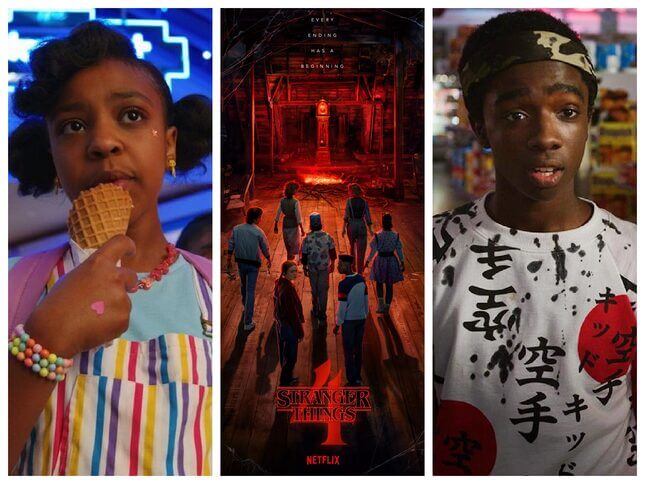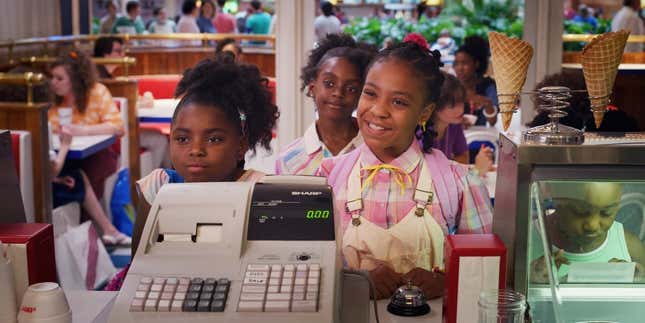The Black Kids in ‘Stranger Things’ Never Get the Story They Deserve
It’s amazing how the writers of Stranger Things can imagine a world of Demogorgons and alternate universes, but not Black people in Indiana.
EntertainmentTV

In case you’ve been under a rock, Netflix’s ‘80s sci-fi thriller, Stranger Things, recently dropped its fourth season, reuniting us with all the iconic Hawkins kids. This season, they’re on a desperate quest to stop Vecna, rescue and extract Elle (aka Eleven) from Dr. Brenner’s lab before the government officials find her, and prevent the basketball jocks from capturing Eddie Munson—who everyone believes is the one mysteriously killing all the town’s kids.
SPOILERS AHEAD!
While I thoroughly enjoyed the fast-paced, nonstop action of this season, there’s still one giant upside-down-sized hole: If this is the second to last season, why have the Black characters still not been given rich backstories or subplots? And why do the writers continue to rely on tired tropes, like the sassy Black woman or the basketball player, to move their stories along? Racism is glazed over or not mentioned at all, and the season’s soundtrack missed a huge opportunity to highlight the major influence Black musicians had on the 70s and 80s. Needless to say, Stranger Things left me wanting so much more from Lucas, his sister Erica, and (the few) supporting Black characters.
“It’s not about what they wrote per se, but what they didn’t write. They wrote the Black character, but didn’t write the Black character with an audaciously Black consciousness of the time that also knew how to move and maneuver in various settings,” Danté Stewart, a Sci-fi scholar, Stranger Things expert, and culture critic told Jezebel in a phone interview. “The interior Black world is all but missing.”
I’m not sure what I actually expected from the Duffer Brothers, but as a young Black girl that grew up in a very Black town in Indiana, I did not feel seen by the Black characters in the series, nor did I feel compelled to care about any of them (except for Erica). It’s amazing how the writers can imagine a world of Demogorgons, alternate universes, and spiritual beings…but not Black people in Indiana.
I shouldn’t be surprised. Stranger Things has a problem with writing in-depth, exciting Black characters that don’t revolve around whiteness or rely on stereotypes. Let’s start with Lucas, the loyal and headstrong friend of the crew, who is cautious and skeptical but remains curious about everything around him. We get these small tidbits of his personality in the first two seasons, and then it seems we learn less and less about him as the show progresses.
-

-

-

-

-

-

-

-

-

-

-

-

-

-

-

-

-

-

-

-

-

-

-

-

-

-

-

-

-

-

-

-

-

-

-

-

-

-

-

-









































